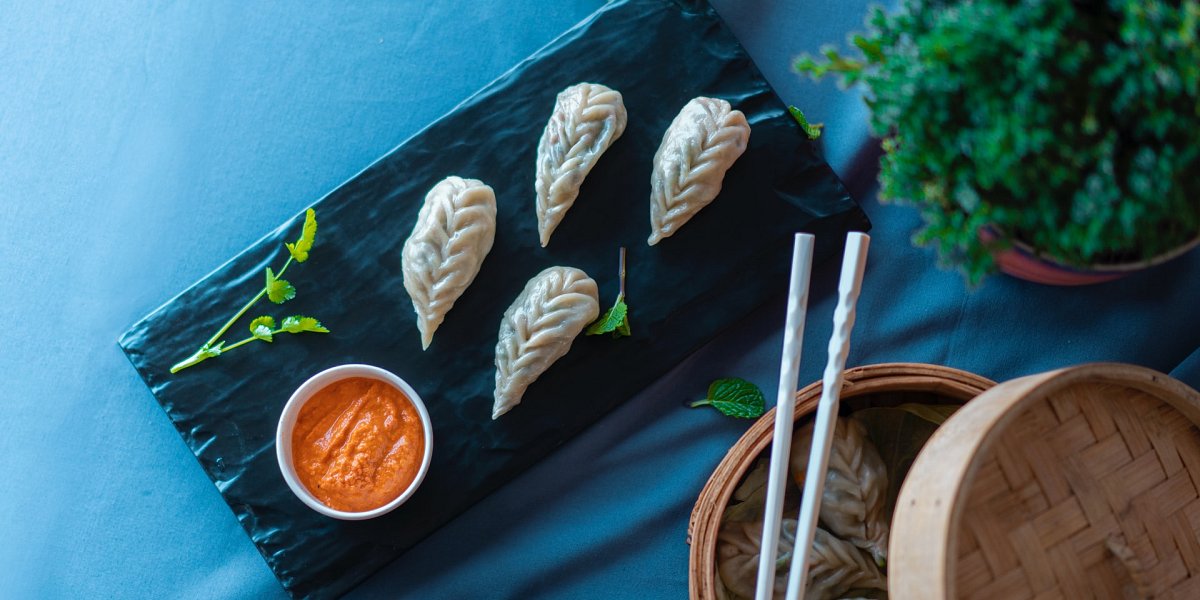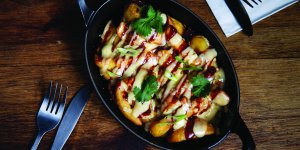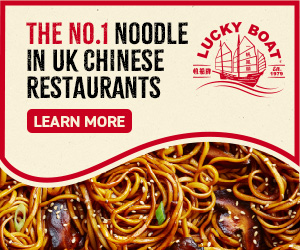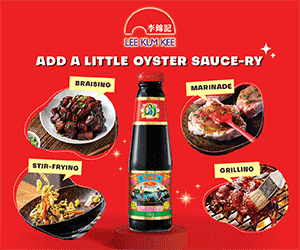Feature: All that and dim sum

From Japan's charcoal-fired Yakitori skewers to squishy Chinese dumplings that pack a flavourful punch, to Thailand's aromatic Tom Yum that balances spicy with sour, Asia presents a culinary playground for venues to explore
People have never been more ready and willing to dabble in the flavours of the world. Lockdown didn’t only give us itchy feet to get out and socialise, but also made us crave new and exciting taste sensations. Unable to travel due to strict restrictions, the public turned to hospitality delivery services to make their taste buds sing.
A December 2020 YouGov report revealed the ways the pandemic shifted takeaway habits across the UK, with those who ordered frequently prior to the outbreak doing even more so during these periods of lockdown-driven closure. So, what global fares most tickled the nation’s fancy? Well, one in four (25%) Brits named Chinese as their favourite takeaway, according to YouGov’s data, closely followed by Indian (17%) – both pipping the UK’s beloved fish and chips (16%) to the post. There’s a reason why chicken tikka masala has countrywide significance, largely deemed the national dish since 2001 and known as a recognised symbol of multicultural Britain. Of the nine cuisines specified, Thai food and sushi are also featured, showing that appetites for pan-Asian dishes are abundant.
'Eclectic tastes'
Consumers are particularly keen to dine out on dishes they can’t easily make at home – something Sharif Uddin, owner of DUSK in Brentwood, Essex, has seen play out in recent months. “I created DUSK because sophisticated customers have eclectic tastes – with not everyone in larger groups agreeing on wanting to eat a single cuisine,” explains Uddin. “The thing about the world’s great cuisines is that they adapt and fuse the most exciting ingredients. Cooking is meant to evolve. It’s not meant to be static or frozen in time.”
One of the best things about a pan-Asian dining concept is the variety of flavours and products you have to play with. Fresh trends in this category are coming thick and fast while current ones keep thriving, so operators should aim to keep on top of what customers want.
Plant positive
It’s important for every kind and size of eatery to consider all dietary requirements when planning their offering. The number of Brits consuming meat-free foods catapulted from 50% in 2017 to 65% in 2019, according to market research company Mintel, while a 2021 survey by The Vegan Society found that almost a quarter of the population have cut down on some form of animal product since the first lockdown. Plant-power is here for good, making the fact that many pan-Asian cuisines serve this style of cooking so well a real benefit for chefs and restaurateurs. “Old favourites like sushi are strong sellers and are still growing,” says Lee Harding, director of Rational UK. “The new big trend is an evolution towards more plant-based products: pan-Asian vegan, using authentic ingredients. Pan-Asian cuisine has always been highly vegetarian- and vegan-focused and lends itself so well to the ever-growing trend for plant-based foods,” says Harding.
Dishes from Southern India, for example, are less reliant on animal products, using coconut oil more frequently than native North Indian dishes, which generally include more ghee in the cooking process. Regional staples from the South include sambar (tamarind-spiced lentil and vegetable stew), dosas (a crepe-like flatbread served either stuffed or plain), idli (fermented and steamed rice and lentil cake) and plenty of chutneys and curries. Other pan-Asian nations whose food is veggie- or vegan-friendly include Korea, Myanmar and Thailand.
Un-bao-lievable
Hirata or bao buns are still enjoying a meteoric rise as a global culinary craze. Believed to have originated in China many hundreds of years ago, these soft, filled Asian rolls have become popular in the West in far more recent times. This gives restaurant and bar operators an opportunity to translate or reinvent a simple yet tasty pan-Asian dish, which is ideal for sit-down dining or as a grab-and-go option. “In our experience, bao buns are incredibly popular right now and pretty much an essential part of any pan-Asian menu,” says Gordon Lauder, MD of frozen food distributor Central Foods. “With their unique, fluffy texture, there’s really nothing else like them.”
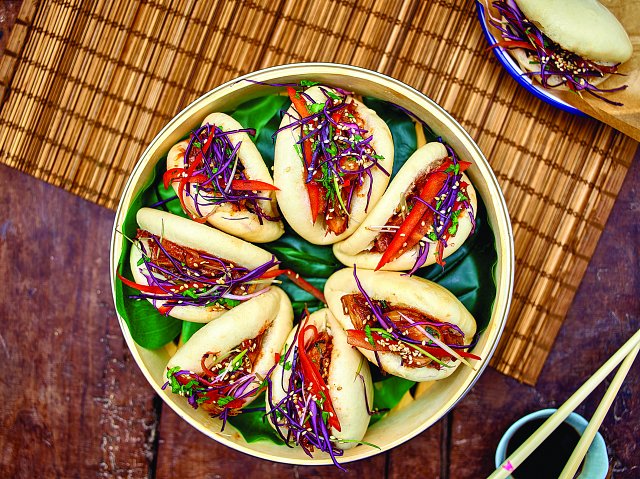
Hirata are steamed, then folded and usually served warm, filled with slow-cooked meat, crunchy salad, pickles and a sticky sauce. The fusion potential and scope for flavours and combos in a snack-sized dish like this is endless.
“They’re often a breakfast choice in China, whereas in the West they go down well in restaurants and on street food stands as options to be eaten throughout the day,” adds Lauder. “Conveniently, bao buns work in a range of serving situations, which is handy for foodservice operators who need to be flexible with their offering. Some restaurants and venues serve them as part of a bento box, which is perfect for both takeaway or onsite serving, or simply using them as an alternative to sandwiches and wraps. Their small, hand-held size, along with their unusual white colour, which allows the filling to ‘pop’ visually, makes them really appealing.”
A classic bao bun filling is BBQ pork with pickled vegetables or sautéed mushrooms, onions and a mix of veg. Chefs can also please vegan and veggie guests with jackfruit, mushroom or tofu alternatives. Hirata can also be adapted and served up for pudding. As Lauder says: “For dessert or a sweet treat, operators might opt for chocolate hazelnut spread with sliced banana, or cream cheese, sliced figs and honey – they’re absolutely delicious!”
Oodles of noodles
Noodles are an integral part of Asian culture, with a history that spans millennia. In 2005, a 4,000-year-old bowl of noodles was unearthed in China, with scientists reporting it to be the earliest example ever found of one of the world’s most-eaten foods.
“Noodles are an essential ingredient in pan-Asian choices, therefore, choosing a good quality product is paramount,” says Greta Strolyte, brand manager of Lucky Boat, part of Westmill Foods.
As the basis for many creations inspired by this region, chefs should ideally seek out noodles that are suitable for multiple diets without sacrificing taste.
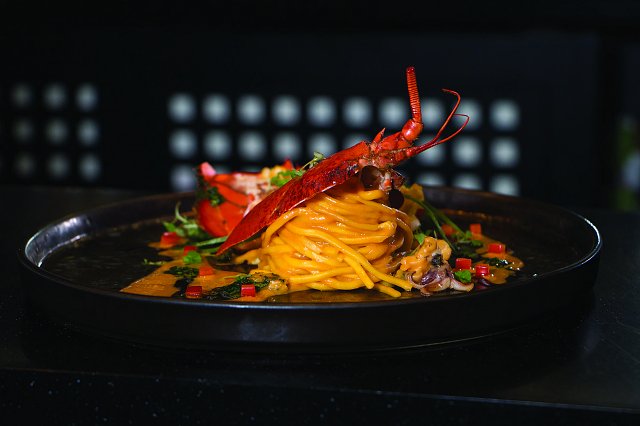
Opting for a product that uses high-quality ingredients – such as superior-grade flour, which gives the noodles a satisfying texture and flavour – means you’re already off to a flying start when creating any noodle-based dish.
Authentic specialities that use this key ingredient include dan dan noodles, originating from Sichuan, now commonly featuring some form of meat, chili oil and ‘Sui Mi Ya Cai’ – a condiment made from preserved mustard greens; lor mee, widely eaten across Singapore, Malaysia and Indonesia, and generally including a thick gravy, pork and boiled egg then sometimes topped with some sort of fish; and kitsune udon from Japan, which commonly pairs a dashi broth with seasoned and fried tofu, garnished with spring onions.
“Versatile enough for breakfast, lunch or dinner, a selection of scrumptious [noodle-based] salads, soups, stir fries and even desserts can be easily and speedily prepared,” Strolyte adds.
Year of the Tiger
February 1 marks the start of Chinese New Year 2022. Also known as Lunar New Year, this 15-day holiday is the biggest annual event for Chinese communities worldwide. It begins with the new moon that takes place between 21 January and 20 February, according to Western calendars, with festivities continuing until the following full moon. It celebrates the different phases of the moon, with Chinese citizens being given seven days off to relax, recuperate and soak up the fun since the mid-90s. The Year of the Tiger is commencing, with this majestic creature being symbolic of power and lordliness in Chinese culture. Typical characteristics of the tiger in the Chinese zodiac include vigour, ambition, courage an enthusiasm – so why not inject some of these qualities into your menu?
Food is a massive part of Chinese New Year, with many traditional dishes served and guzzled up at joyful family get-togethers. Ahead of the occasion, Strolyte has some advice for hospitality operators: “Take the opportunity to welcome in the Year of the Tiger this Chinese New Year with a celebratory menu of the UK’s best-loved pan-Asian dishes –favourites such as stir-fried noodles make a versatile option, great to takeaway or eat in.”
Other cherished dishes traditionally eaten throughout the holiday include dumplings, which symbolise wealth, and should be made with the correct number of pleats to ensure they are ‘lucky’; fish, symbolising an increase in prosperity; spring rolls, which also represent wealth; and Chángshòu Miàn, or ‘longevity noodles’, a symbol for happiness and endurance.
Given the concern around the Covid-19 Omicron variant, people are still largely doing their best to restrict travel – but their hunger to experience global cuisines remains. Why not usher the Lunar New Year in with style, honour the beautiful culture of this region and let your pan-Asian creations take centre stage? Your customers will thank you for it!


